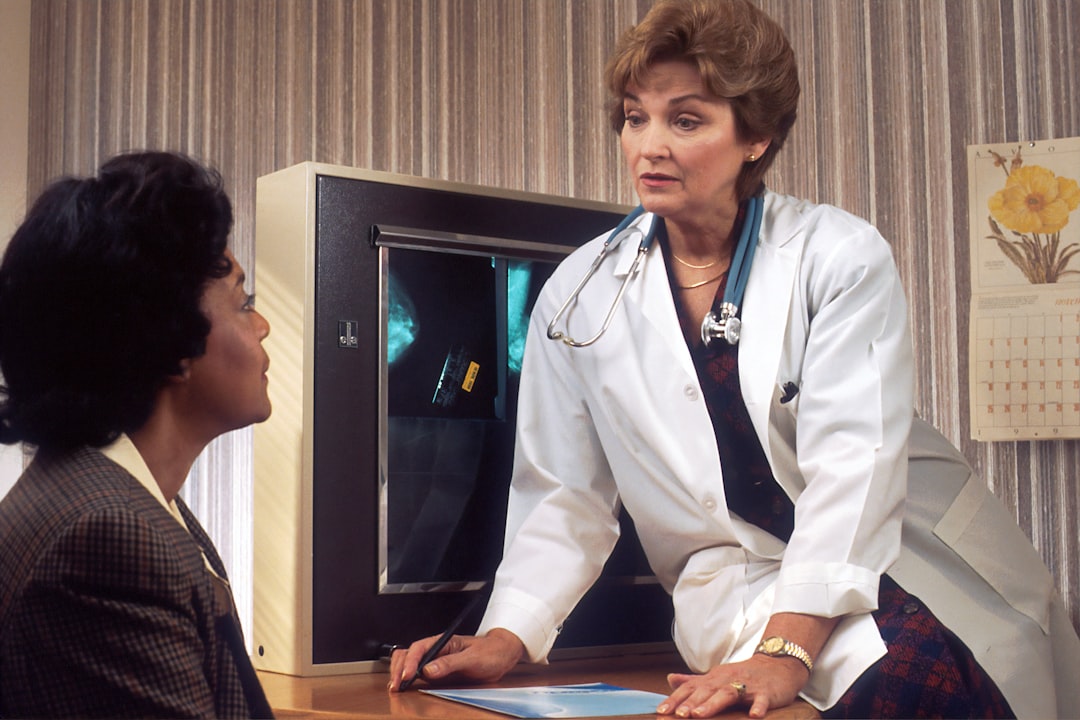Common Causes of Truck Accidents
Truck accidents are a significant concern on our roadways, given the sheer size and weight of these massive vehicles. The consequences of such accidents can be catastrophic, often resulting in severe injuries or fatalities. Understanding the common causes of truck accidents is crucial for developing strategies to prevent them and ensure safer driving conditions for everyone.
One of the primary causes of truck accidents is driver fatigue. Truck drivers often work long hours, sometimes exceeding legal limits, which can lead to exhaustion. Fatigued drivers have slower reaction times and impaired judgment, increasing the risk of an accident. Federal regulations aim to limit driving hours and mandate rest breaks, but these rules are not always followed or enforced effectively.
Another significant factor is distracted driving. With the ubiquity of smartphones and other electronic devices, many drivers are tempted to take their eyes off the road. For truck drivers, who need to navigate large vehicles through traffic, any momentary lapse in attention can have dire consequences. Texting, adjusting GPS systems, or even eating while driving can all contribute to dangerous distractions.
Speeding is also a major contributor to truck accidents. Given their size and weight, trucks require longer distances to stop compared to smaller vehicles. When a truck is speeding, it becomes much harder for the driver to react in time to sudden changes in traffic conditions or obstacles on the road. Speeding not only increases the likelihood of an accident but also exacerbates its severity when one occurs.
Mechanical failures pose another risk factor for truck accidents. Trucks require regular maintenance due to their extensive use and heavy loads they carry. Issues like brake failures, tire blowouts, and engine problems can lead directly to crashes if they occur while the vehicle is in motion. Regular inspections and timely repairs are essential but may be neglected due to tight schedules or cost-cutting measures by trucking companies.
Weather conditions also play a critical role in truck safety. Rain, snow, fog, and ice create hazardous driving conditions that make controlling a large vehicle even more challenging. Reduced visibility and slippery roads increase the risk of skidding or losing control entirely. Drivers must exercise extra caution during adverse weather conditions; however, pressure from deadlines might push them into taking unnecessary risks.
Lastly, improper loading of cargo can affect a truck's stability on the road. Unevenly distributed or unsecured loads can shift during transit, making it difficult for drivers to maintain control over their vehicles especially during turns or sudden stops.
In conclusion, multiple factors contribute to truck accidents including driver fatigue, distracted driving, speeding, mechanical failures, adverse weather conditions and improper loading practices among others . Addressing these issues requires comprehensive efforts involving stricter enforcement of regulations , better training programs for drivers , improved maintenance protocols , public awareness campaigns about sharing roads safely with trucks among other measures . By tackling these common causes head-on , we can work towards significantly reducing occurrences thus ensuring safer roads for everyone .
Impact and Consequences of Truck Accidents
Truck accidents are a harrowing reality on our roads, and their impact and consequences extend far beyond the immediate collision. These incidents often involve large commercial vehicles, which means that the stakes are higher compared to standard car accidents. The aftermath of a truck accident can be felt on multiple levels: human, economic, and societal.
First and foremost, the human toll is paramount. Truck accidents frequently result in severe injuries or fatalities due to the sheer size and weight of these vehicles. Victims may suffer from life-altering conditions such as spinal cord injuries, traumatic brain injuries, or limb amputations. The emotional trauma for survivors and the bereaved families is immeasurable. These physical and emotional scars can lead to long-term psychological issues like PTSD, anxiety, and depression.
Economically, truck accidents impose significant costs. Medical expenses for treating injuries can be astronomical, often requiring prolonged rehabilitation and ongoing care. For those who lose their lives or become permanently disabled, lost income becomes a pressing issue for their families. Additionally, property damage to vehicles and infrastructure adds another layer of financial strain. Insurance premiums may skyrocket for companies involved in these accidents, leading to increased operational costs.
Moreover, truck accidents have broader societal implications. They can cause traffic congestion that disrupts daily commutes and delays deliveries of goods, affecting supply chains and local economies. Cleanup efforts can take hours or even days depending on the severity of the spill or debris involved in the crash. This not only hampers road safety but also places an additional burden on emergency services.
Regulatory scrutiny often intensifies following major truck accidents. Governments may implement stricter safety regulations or enforcement measures aimed at preventing future occurrences. While these regulations are necessary for public safety, they can also increase operational costs for trucking companies who must comply with new standards.
In conclusion, the impact and consequences of truck accidents are profound and multifaceted. Human suffering takes center stage as victims grapple with physical pain and emotional distress while families cope with loss or drastic lifestyle changes due to injury-related incapacities. Economically, the ripple effects touch medical systems, insurance industries, and individual livelihoods alike. Societally, these incidents prompt regulatory responses aimed at enhancing safety but also introduce new challenges for industry compliance. Understanding these dimensions is crucial for developing effective strategies to mitigate both the occurrence of truck accidents and their far-reaching impacts.
Legal Aspects and Regulations Surrounding Truck Accidents
Truck accidents are a significant concern on the highways, often leading to severe injuries, fatalities, and substantial property damage. Understanding the legal aspects and regulations surrounding truck accidents is crucial for drivers, companies, and victims seeking justice. This essay delves into the various facets of this intricate legal landscape.
Firstly, it's essential to recognize that commercial trucks are subject to stringent federal and state regulations designed to promote safety. The Federal Motor Carrier Safety Administration (FMCSA) plays a pivotal role in enforcing these rules. One key regulation is the Hours of Service (HOS) rule, which limits the number of hours a truck driver can operate a vehicle without taking mandatory rest breaks. This regulation aims to reduce fatigue-related incidents by ensuring that drivers remain alert and capable of operating their vehicles safely.
In addition to HOS rules, truck maintenance standards are another critical area governed by law. Trucks must undergo regular inspections and maintenance checks to ensure they meet safety standards. Failure to adhere to these requirements can result in mechanical failures that lead to accidents. When an accident occurs due to poor maintenance, liability may fall on the trucking company for neglecting their duty of care.
Liability in truck accidents is a complex issue involving multiple parties including the truck driver, trucking company, cargo loaders, and even manufacturers of truck parts. Determining fault requires thorough investigation and understanding of both state laws and federal regulations. For instance, if a driver was found speeding or driving under the influence at the time of the crash, they could be held primarily responsible. However, if it's discovered that faulty brakes contributed significantly to the accident, then liability might extend to the manufacturer or maintenance provider.
Legal proceedings often hinge on evidence such as driver logs, electronic control modules (ECMs), also known as black boxes, eyewitness testimonies, and expert analysis of crash scenes. These pieces of evidence help reconstruct events leading up to the accident and establish negligence or compliance with safety protocols.
Victims seeking compensation for damages sustained in truck accidents typically file personal injury lawsuits or wrongful death claims in cases involving fatalities. Compensation can cover medical expenses, lost wages, pain and suffering, among other losses. Navigating these legal waters requires skilled attorneys who specialize in trucking regulations due to their complexity compared to standard vehicular accident cases.
Furthermore, insurance policies for commercial trucks differ significantly from those covering passenger vehicles due to higher risks associated with heavy trucks' size and weight. Trucking companies usually carry substantial insurance policies; however, disputes over coverage amounts frequently arise during claims settlement processes.
Emerging technologies such as electronic logging devices (ELDs) have been mandated by FMCSA since 2017 for monitoring compliance with HOS regulations more effectively than traditional paper logs could achieve. Such advancements aid both regulatory bodies in enforcement efforts while providing clear records during litigation following accidents.
In conclusion, understanding legal aspects surrounding truck accidents involves navigating through a web of federal guidelines like those enforced by FMCSA alongside state-specific laws governing roadway conduct and liability issues among multiple parties involved post-accident scenarios-ranging from drivers themselves up through corporate entities managing fleets down toward product manufacturers supplying crucial vehicle components-all aimed ultimately towards enhancing overall road safety while ensuring justice prevails when mishaps unfortunately occur on our highways today.
Safety Measures and Prevention Strategies for Truck Accidents
Truck accidents are a significant concern on our roads, often resulting in severe injuries and fatalities. The sheer size and weight of trucks mean that collisions involving these vehicles can be particularly devastating. As such, implementing effective safety measures and prevention strategies is crucial to reducing the frequency and severity of truck accidents.
One of the primary safety measures for preventing truck accidents is regular vehicle maintenance. Ensuring that trucks are in good working order reduces the risk of mechanical failures that can lead to accidents. This includes routine checks on brakes, tires, lights, and other essential components. A well-maintained truck is less likely to experience critical failures while on the road.
Driver training is another vital aspect of accident prevention. Truck drivers need specialized training to handle their vehicles safely under various conditions. Comprehensive training programs should cover defensive driving techniques, safe loading practices, and proper response to emergencies. Additionally, ongoing education helps drivers stay updated on new regulations and technologies designed to enhance road safety.
Fatigue management is also critical in preventing truck accidents. Long hours on the road can lead to driver fatigue, significantly impairing reaction times and decision-making abilities. Regulations limiting driving hours and mandating rest breaks are essential in combating fatigue. Employers should also promote a culture where drivers feel comfortable reporting fatigue without fear of repercussions.
Technology plays an increasingly important role in enhancing truck safety. Advanced Driver Assistance Systems (ADAS), such as lane departure warnings, automatic emergency braking, and blind-spot monitoring, can help prevent accidents by alerting drivers to potential hazards or even taking corrective actions automatically. Telematics systems can monitor driver behavior in real-time, providing feedback on speeding, harsh braking, and other risky behaviors.
Load management is another crucial factor in truck safety. Improperly loaded cargo can shift during transit, causing the truck to become unbalanced or even tip over. Ensuring that loads are properly secured and evenly distributed helps maintain vehicle stability and control.
Furthermore, addressing broader infrastructure issues can contribute significantly to reducing truck accidents. Well-designed roads with adequate signage, lighting, and maintenance reduce the likelihood of accidents occurring due to poor road conditions or confusing layouts. Dedicated truck lanes or designated routes for heavy vehicles can also help minimize interactions between trucks and smaller vehicles.
Public awareness campaigns play a role as well by educating all road users about sharing the road safely with trucks. Understanding the limitations of large vehicles-such as their longer stopping distances and larger blind spots-can help car drivers make safer decisions when driving near trucks.
In conclusion, preventing truck accidents requires a multifaceted approach involving regular vehicle maintenance, comprehensive driver training, effective fatigue management policies, advanced technology adoption, proper load management practices, infrastructure improvements, and public education efforts. By implementing these strategies collectively, we can create safer roads for everyone-reducing not only the number but also the severity of truck-related incidents.





